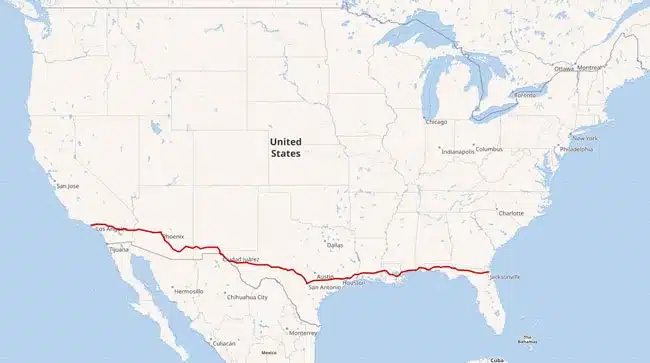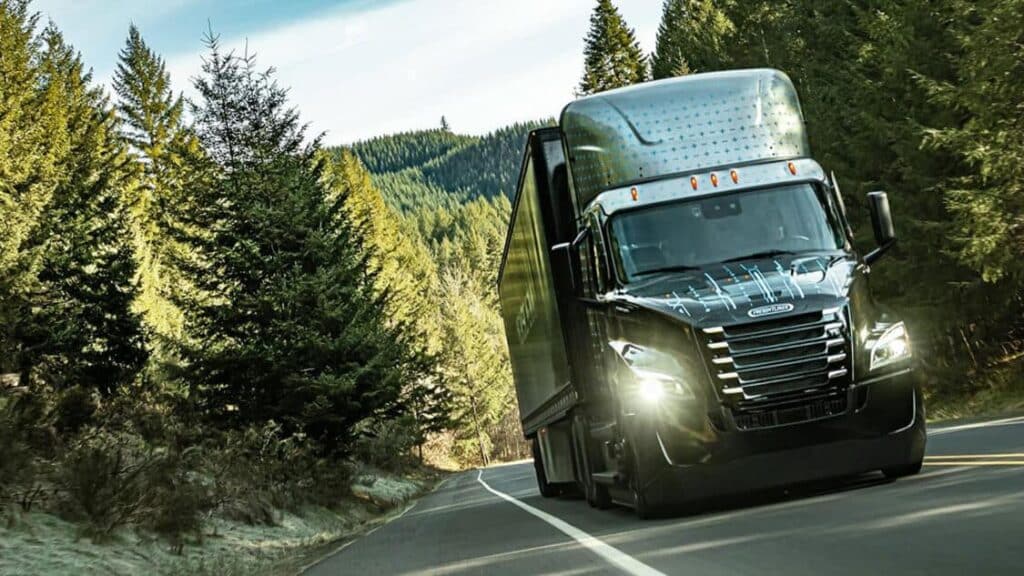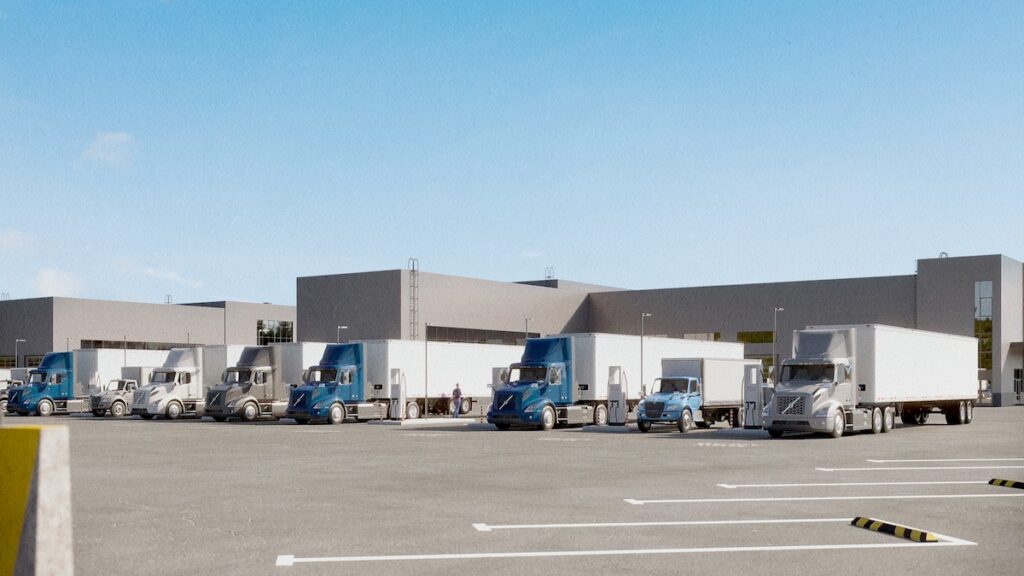Terawatt Partners on I-10 Electric Truck Pilot With PepsiCo, Maersk, Others
A powerful coalition involving companies like TeraWatt Infrastructure, Microsoft, PepsiCo, Maersk, DB Schenker, and AIT Worldwide is pushing to electrify the Interstate 10 (I-10) trucking corridor. This initiative focuses on establishing charging infrastructure specifically designed for long-haul battery-electric trucks. The corridor connects Los Angeles, home to the nation’s busiest ports, to El Paso, Texas, which links to the second-busiest border crossing.
The electrification of this route is critical due to its importance in U.S. logistics, providing a greener solution for freight transport along a key trade artery.
The pilot project for deploying heavy-duty electric vehicles (EVs) and charging infrastructure is designed to generate practical insights from real-world operations. By implementing this infrastructure and testing EVs in everyday freight scenarios, the pilot seeks to gather valuable data on performance, challenges, and scalability. These findings will be shared with other shippers and carriers, encouraging them to adopt electrification solutions on a larger scale.
Additionally, the coalition involved in this pilot aims to motivate technology providers to accelerate the development of turn-key solutions for electric transport. This would simplify the transition for companies, allowing for a smoother shift to electrification with integrated, ready-to-use solutions for charging, vehicle management, and logistics operations. The ultimate goal is to drive industry-wide adoption of sustainable transport practices by demonstrating viability and providing clear, actionable learnings.

“This collaborative coalition is an important step in advancing electric-powered, heavy-duty fleet transport,” said Cliff Henson, corporate vice president of the Microsoft Cloud Supply Chain. “As Microsoft works toward our ambitious carbon-neutral goals, implementing a sustainable logistics framework is a critical factor. The I-10 corridor pilot is a key part of building this framework, and we’re excited to be at the forefront of an electric-powered evolution in logistics.”
PepsiCo, ranked No. 2 on the Transport Topics (TT) Top 100 list of the largest private fleet carriers in North America, operates 11,618 tractor-trailer trucks across the continent. The company held the No. 1 spot among private fleets for 14 consecutive years until 2023, showcasing its vast logistical footprint.
Maersk, ranked No. 5 on the TT Top 50 list of the largest global freight carriers, recently opened a 402,000-square-foot warehouse in El Paso in September 2024, equipped with 73 dock doors. Maersk operates more than 26 million square feet of warehouse space across North America, reflecting its substantial logistics and freight capabilities on a global scale.

“To electrify trucking on a meaningful scale, all stakeholders need to invest in expanding the electric grid for charging capabilities,” said Maersk North America Regional President Charles van der Steene. “With our ambition to reach net zero by 2040, we’re committed to being part of collaborative efforts like these, which help move us toward our goal and allow us to offer customers a pathway toward a decarbonized alternative for trucking.”
The freight logistics landscape is shifting with DSV A/S’s acquisition of DB Schenker, announced on September 13, 2024, creating the world’s largest freight forwarder. DB Schenker previously ranked No. 25 on the Transport Topics (TT) Top 100 list of largest logistics companies in North America. DSV A/S, which ranks No. 10 on the North American logistics list and No. 14 globally, expanded its reach with this acquisition. Maersk, which had initially been in the running to acquire DB Schenker, dropped out of the race in July 2024.
Additionally, AIT Worldwide Logistics, which ranks No. 35 on the North American logistics list, is part of a coalition that includes shippers like PepsiCo and carriers such as Maersk, teaming up to electrify the I-10 trucking corridor. The coalition is partnering with the Smart Freight Centre, a nonprofit focused on climate action in the freight sector, to drive this initiative.
Christoph Wolff, CEO of the Smart Freight Centre, said, “Through this coalition, we seek to jointly accelerate the uptake of long-haul EV heavy-duty trucks. Together with Terawatt and other coalition partners, we look forward to accelerating freight decarbonization and proving that the electric truck corridor can promptly become operational at low volumes and rapidly scale up afterward.”
Terawatt Infrastructure Tapped as the Strategic Charging Solutions Provider
TeraWatt Infrastructure has been tapped as the strategic charging solutions provider for the project. They will deliver charging infrastructure, along with software, operations, and maintenance support, at six of their hubs along the I-10 corridor, supporting the coalition’s goal of reducing carbon emissions from long-haul trucking.

“This project represents more than a pilot for heavy-duty EV operations; it puts forward a concrete road map to scaling fleet electrification into a full ecosystem,” TeraWatt CEO Neha Palmer said.
“As we continue to build out the I-10 electric corridor and utilize the recent $63.8M in grant funding alongside NMDOT to develop reliable charging infrastructure solutions, we have a historic opportunity to work with global leaders who share our vision and investment into the sustainable future of mobility,” Palmer continued.
TeraWatt Infrastructure, tasked with designing, building, operating, and owning the facilities, is spearheading this electrification project. In November 2023, TeraWatt broke ground on its first heavy-duty charging facility at Rancho Dominguez, California, located about 15 miles north of the Ports of Los Angeles and Long Beach—two of the busiest in the nation. PepsiCo, already a major player in sustainable logistics, was an early customer for this charging infrastructure, supporting its last-mile delivery operations in the Los Angeles area. This marks a significant step in reducing emissions from freight operations along one of the nation’s busiest trucking routes.
Terawatt Infrastructure is focused on delivering dependable charging solutions tailored for the future of fleet transportation. The company plays a key role in supporting the shift to electric vehicles (EVs) by designing, operating, and owning EV charging hubs specifically for fleet operations. By integrating property assets with energy and charging expertise, Terawatt aims to provide comprehensive infrastructure that meets the needs of electric fleet operators.
Founded to fill a critical gap in the market, Terawatt positions itself as the nation’s long-term partner for fleets making the transition to all-electric transportation. The company’s goal is to ensure reliable and scalable infrastructure that facilitates the growing demand for electrification in commercial and logistics sectors.
The National Zero-Emission Freight Corridor Strategy
The I-10 corridor plays a crucial role in the National Zero-Emission Freight Corridor Strategy, a U.S. government initiative aimed at reducing emissions in freight transport. As part of this effort, the Federal Highway Administration granted $63.8 million to the New Mexico Department of Transportation in February 2024 to establish two medium- and heavy-duty truck charging corridors along I-10. These corridors are critical for supporting the transition to zero-emission freight transport.
The National Zero-Emission Freight Corridor Strategy (published by the U.S. Department of Transportation (DOT) and the U.S. Department of Energy’s (DOE) Joint Office of Energy and Transportation) outlines a phased plan to transition medium- and heavy-duty freight vehicles (ZE-MHDVs) to zero-emission technologies across the U.S. The strategy, intended to guide both public and private sector efforts, is structured to ensure a gradual but comprehensive infrastructure rollout from 2024 to 2040 along the National Highway Freight Network (NHFN).
The four phases are:
2024-2027: Establishing Priority Hubs: Focus on key freight hubs with the highest volume, building the necessary infrastructure.
2027-2030: Connecting Hubs Along Freight Corridors: Begin linking these hubs via zero-emission freight corridors, creating early-stage connectivity.
2030-2035: Expanding Corridor Connections: Continue expanding the network to include more routes and regions, moving toward an interconnected infrastructure system.
2035-2040: Achieving a National Network: Fully link regional corridors to establish a nationwide zero-emission freight network.
This phased approach ensures infrastructure development keeps pace with the growing availability and adoption of zero-emission vehicles (ZEVs), supporting U.S. efforts to decarbonize the transportation sector, reduce emissions, and improve air quality. The strategy also aims to support freight industry modernization while ensuring that both public and private stakeholders work together to meet the ambitious timeline.

Electric Vehicle Marketing Consultant, Writer and Editor. Publisher EVinfo.net.
Services